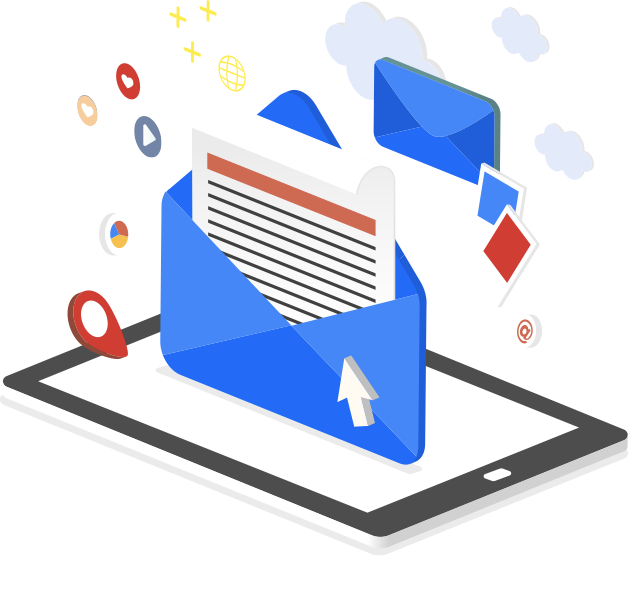Converting More Website Visitors into Leads

Now that you know what it takes to drive traffic and engage visitors with great content, the next step is to get your visitors to convert from a prospect into a lead.
You don’t want them leaving without providing some information, or else you will lose the opportunity to nurture them until they are ready to buy.
Here are some must-haves for increasing your website conversions.
Effective Calls-To-Action
The effect of a successful Call to Action (CTA) is to drive a visitor to take the desired action.
CTAs are typically kept above the fold or in clear sight on a page, so visitors know where to take the next step.
CTAs are the key to lead generation, but they need to be done right to convert traffic into leads.
Make them bigger and bolder than most other elements on the page, but don’t overdo it.
Consider colors of the CTA, whether it is a link, button, or image.
Make them look so good people will want to click on them.
Offer CTAs that provide value, like guides, whitepapers, estimates, etc.
Don’t rely on that as your only option for conversion.
Make the CTA look clickable.
You can do this by making a button or adding a hover effect to an element.
Keep it simple and clear what is being offered.
Less is more.
Try testing different colors (e.g. red versus green buttons), language, and placement to see which CTAs get more clicks and drive more leads (refer to the “Messaging” section in Part 3 for A/B testing tools).
CTA Positioning
So you have Call-to-Actions, but how will people find them?
You want to think about where you will be placing your CTAs.
You don’t want to dump CTAs everywhere. That will give people too many options or not the right options at the right time.
Consider these tips:
Segment your offers strategically.
Place educational type offers (whitepapers, downloads) on top-level pages.
Add more solution-based offers (request a quote, trial, pricing) as the prospect is digging deeper and learning more about your offering.
Place CTAs both above and below the fold.
Placing CTAs above the fold is important because that area of a page gets the most views.
However, there are still other areas of a page to promote your CTAs. Add some at the bottom of pages and within body content as well.
Use CTAs on thank-you pages.
A thank you page loads right after someone completes a web form.
Many times, there is plenty of real estate to offer more downloads and CTAs.
Once a prospect completes a form, don’t stop there. Offer them additional downloads, however, if possible, do so without requiring them to complete another form.
As indicated in the example above, it’s unclear which version will drive the most conversions.
Test different placements to know which one works best for your website.
Landing Pages
Now that you have some awesome CTAs you need to drive those links to landing pages.
Landing pages, sometimes called “Lead Capture Pages,” are used to convert visitors into leads by completing a transaction or by collecting contact information from them.
Landing pages consist of:
- A headline and (optional) sub-headline
- A brief description of the offer/CTA
- At least one supporting image
- (Optional) supporting elements, such as testimonials or security badges
- And most importantly, a form to capture information
Landing pages are necessary to implement. They direct your visitors to one particular offer without the distractions of everything else on your website. Visitors are on a landing page for one and only purpose: to complete the lead capture form!
What makes an effective landing page?
Keep your pages simple and minimize distractions.
Never ever use your homepage as a landing page.
Remove main site navigation from the landing page so visitors can focus on completing the form and not continue to search your site.
Make it very clear what the offer is and make it irresistible.
Make sure that the content on your landing page matches your call-to-action.
If there is a disconnect in your messaging, visitors will hit the back button.
Reduce friction – don’t make visitors think too much or do too much work (i.e. reading).
Use a unique form and only collect the information you absolutely need.
Effective landing pages are what will turn your website into a lead-generating machine.
Forms
Forms are the key to a landing page.
Without them, there is nothing for the visitor to do on that page.
They come in handy when it’s time for people to sign-up, subscribe to your site, or download an offer.
You might be wondering how much or how little information you should require with a form.
There is no magic answer when it comes to how many fields your form should contain, but the best balance would be to collect only the information you really need.
The fewer fields you have in a form, the more likely you will receive more conversions.
This is because with each new field you add to a form, it creates friction (more work for the visitor) and fewer conversions.
A longer form looks like more work, and sometimes it will be avoided altogether.
But on the other hand, the more fields you require, the better quality those leads might be.
The best way to determine what works best is to test it.
Only ask for the information you need for you or your sales team.
Also, avoid asking for sensitive information that companies or consumers may not want to disclose.
The more valuable an offer may be perceived, the more information you may be able to ask for in return.
If it’s a newsletter subscription, only ask for an email address (and maybe first name, at most).
People are more resistant to giving up their information these days, especially because of the increase in spam.
Add a privacy message (or link to your privacy policy) that indicates their email will not be shared or sold.
Don’t just use the word “SUBMIT” on your form buttons!
No one wants to submit anything.
Instead, try:
- Download Whitepaper
- Get your free eBook
- Join our newsletter
If advertising a downloadable offer as your CTA, fulfill the request instantly.
For example, if your form is for a whitepaper download, include a link to download that whitepaper on the very next page (typically called a “thank you” page).
Newsletter Opt In
Speaking of newsletters, you should definitely offer a newsletter subscription on your website. Not all CTAs need to be big offers.
Newsletters or mailing lists are the perfect way to collect email addresses so you can nurture prospects over time to become leads.
Just make sure it’s easy for people to find your subscription form.

For more hands-on help from the Pronto team, book a free meeting with a Pronto advisor.
©2022 Pronto Marketing All Rights Reserved.